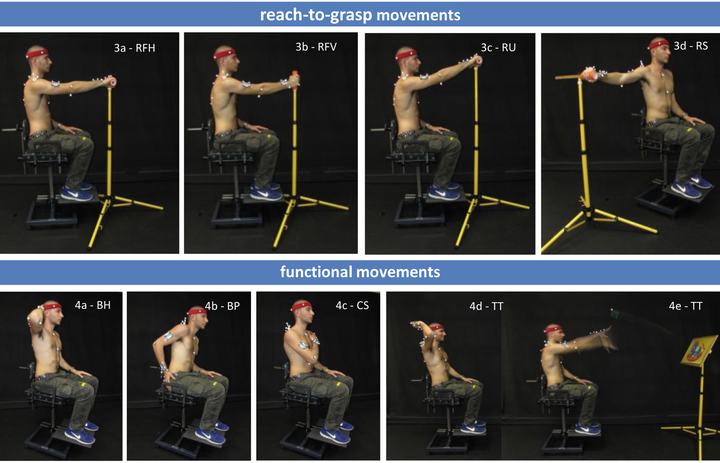The reliability of the ELEPAP clinical protocol for the 3D kinematic evaluation of upper limb function

Abstract
Upper limb (UL) kinematic assessment protocols are becoming integrated into clinical practice due to their development over the last few years. We propose the ELEPAP UL protocol, a contemporary UL kinematic protocol that can be applied to different pathological conditions. This model is based on ISB modeling recommendations, uses functional joint definitions, and models three joints of the shoulder girdle. The specific aim of this study was to determine the within and between session reliability of the ELEPAP UL model. Ten healthy subjects (mean age: 13.6 Æ 4.3 years) performed four reach-to-grasp and five functional tasks, which included a novel throwing task to assess a wide spectrum of motor skills. Three trials of every task in two different sessions were analyzed. The reliability of angular waveforms was evaluated by measurement error (s) and coefficient of multiple correlation (CMC). Spatiotemporal parameters were assessed by standard error of measurement (SEM). Generally joint kinematics presented low sw and sb errors (textless100). A selection of angular waveforms errors was presented to inspect error fluctuation in different phases, which was found to be related to the demands of the different movements. CMCw and CMCb values (>0.60) were found, demonstrating good to excellent reliability especially in joints with larger ranges of motion. The throwing task proved equally reliable, enhancing the universal application of the protocol. Compared to the literature, this study demonstrated higher reliability of the thorax, scapula and wrist joints. This was attributed to the highly standardized procedure and the implementation of recent methodological advancements. In conclusion, ELEPAP protocol was proved a reliable tool to analyze UL kinematics.